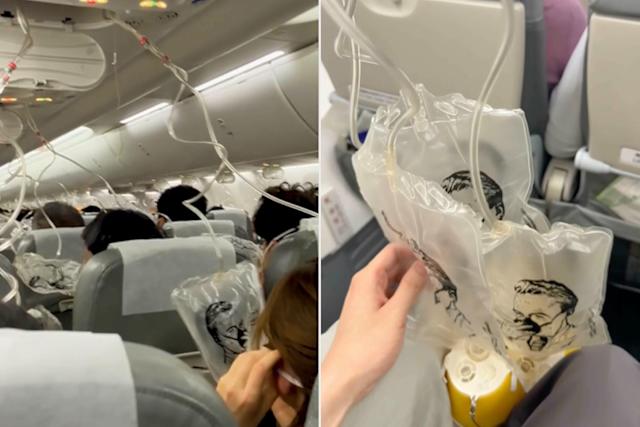A flight from China to Japan turned harrowing for 191 people onboard when their Boeing 737-800 rapidly lost altitude, prompting emergency procedures midair and sparking panic across the cabin.
On June 30, Spring Japan Flight JL8696—operating as part of a codeshare with Japan Airlines—took off from Shanghai Pudong Airport heading for Tokyo Narita. Roughly midway through the journey, the aircraft suffered a serious pressurisation system failure that forced it to plummet from 36,000 feet to below 10,500 feet in under ten minutes.
As oxygen levels dropped inside the cabin, passengers were jolted awake or thrown into panic as oxygen masks fell from overhead. “My legs are still shaking. I really thought I was going to die,” a shaken traveller told the South China Morning Post. According to multiple reports, the abrupt descent triggered emergency alerts in the cockpit, with the pilot immediately requesting to divert the flight.
At approximately 6:53 pm local time, the crew declared an emergency and rerouted the aircraft to Kansai International Airport in Osaka, where it landed safely at 8:50 pm. No physical injuries were reported, but many onboard described the psychological impact as lasting and traumatic.
Passengers Draft Farewell Messages During Emergency Descent
Some passengers, fearing the worst, began drafting final messages to loved ones. One passenger told People.com, “I was on the verge of tears as I wrote my will and penned details of my insurance and bank card PINs.” Another described how silence filled the cabin as the aircraft dropped. “Seeing the flight attendants on the verge of tears triggered panic,” a passenger named Wang told The Standard.
The terrifying episode has led to investigations by Japan’s Ministry of Land, Infrastructure, Transport, and Tourism. Authorities are currently analysing voice recordings from the cockpit and onboard systems to determine what caused the sudden loss of cabin pressure.
Once the aircraft landed in Osaka, passengers remained onboard for more than an hour before disembarking. Spring Japan later apologised for the ordeal and offered 15,000 yen (approximately $104 USD) in compensation to each traveler. In addition, the airline canceled the return flight JL8695 on July 1 and 2 and extended refund and rebooking options within 30 days.
The aircraft involved, a Boeing 737-800, has drawn renewed scrutiny in recent months due to a string of safety concerns tied to the Boeing 737 family. Since 2000, this model has been linked to over a dozen fatal incidents globally, including the China Eastern MU5735 crash in 2022 and the Jeju Air accident in South Korea in 2024.
Recent High-Altitude Flight Emergencies Raise Safety Concerns
The Spring Japan incident also comes in the wake of other high-altitude scares. On June 22, Air India Flight AI-130 reported symptoms of dizziness and nausea among passengers while flying from London to Mumbai. Although later attributed to suspected food poisoning, initial symptoms mirrored hypoxia. Just five days later, Ethiopian Airlines Flight ET640 experienced a pressurisation failure at 33,000 feet, leading to an emergency landing in Mumbai and medical evaluations for several passengers.
Experts note that a sudden drop in cabin pressure, known as rapid decompression, is a critical emergency that requires immediate descent to a breathable altitude. At typical cruising levels (30,000–40,000 feet), atmospheric oxygen is too thin for humans to survive without supplemental systems. In these situations, aircraft are designed to descend rapidly to around 10,000 feet—where the air is dense enough to breathe safely.
Spring Japan, a budget carrier partly owned by Japan Airlines, confirmed that it operated Flight JL8696 and emphasised that its Chinese namesake, Spring Airlines, was not involved in the incident.
Although no one was physically hurt, many passengers are still processing the emotional aftermath. Investigations are ongoing, and results from Japan’s aviation authority are expected in the coming weeks.


